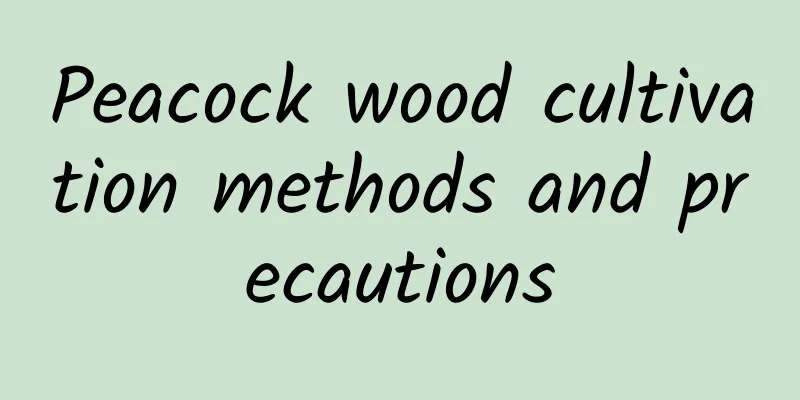Peacock wood cultivation methods and precautions

|
Peacock wood is a relatively easy plant to grow. The most suitable growth temperature is between 20-30℃. During the maintenance period, it needs to be exposed to more light and provided with suitable temperature and soil. How to grow peacock wood1. Temperature Peacock wood prefers a warm growing environment. The most suitable growth temperature is 18-28℃. The temperature in spring and autumn is stable and the temperature difference is relatively small. It is recommended to avoid planting in high temperature weather. 2. Lighting Peacock wood has relatively high requirements for light, and it needs no less than 8 hours of light a day. In addition, it must avoid direct sunlight and it is best to keep it in a cool place. 3. Moisture Peacock wood needs a lot of water to grow, but the frequency of watering is different in different seasons. Generally, it needs to be watered once every 3-5 days in spring and autumn, and every day in summer. 4. Fertilization Peacock wood has a relatively large demand for fertilizer. It is recommended to use nitrogen, phosphorus and potassium compound fertilizer once a month, but when the temperature is too extreme in summer and winter, fertilization needs to be stopped. 5. Pruning Peacock wood also needs regular pruning during its growth process, and the dead branches, dead leaves, diseased branches, and broken flowers of the plant should be cut off in time to avoid consuming unnecessary nutrients. Precautions for peacock wood maintenanceThe peacock wood plant is afraid of cold. During winter maintenance, the minimum temperature should be maintained above 5°C. Keep the environment warm and ventilated, and do not let the environment be overly shaded. |
<<: Cultivation methods and precautions of bulbous begonia
>>: Cultivation methods and precautions of giant fairy lily
Recommend
How much does a pot of Phalaenopsis cost?
1. Price The price of Phalaenopsis in different r...
Is lemon cultivation profitable? Prospects and profits
Is growing lemons profitable? Lemon is quite comm...
How to trim golden marbles
Pruning time There are three key times to prune t...
Do lilies like water or drought?
Do lilies prefer moisture or drought? Lily has a ...
Why does the gardenia only have leaves but no flowers?
1. Pruning problem (1) Specific reasons: Some pla...
How to prune the fortune tree after it is frozen, and when to prune it
1. How to prune after being frozen After being fr...
Kalanchoe cutting method and precautions
Kalanchoe is a succulent plant with a long flower...
What month is suitable for planting camellia? When is the best time to plant it?
When to plant camellia There are generally two pl...
The ornamental value of pink muhly grass
Ornamental value When it comes to appreciation, i...
Is the Thousand Buddha Hands suitable for a deep or shallow basin?
Is the Thousand Buddha Hands suitable for a deep ...
The flower language and legend of rosemary
Rosemary Flower Language The flowers of Lost Frag...
Purslane planting time and method
Purslane planting time The planting time of Pursl...
How to eat UFO melon
Various ways to eat Cold There are various ways t...
How long does the tulip bloom?
Flowering time March to April every year is the f...
What to do if orchid leaves turn yellow
1. Increase the temperature Reason: The environme...









